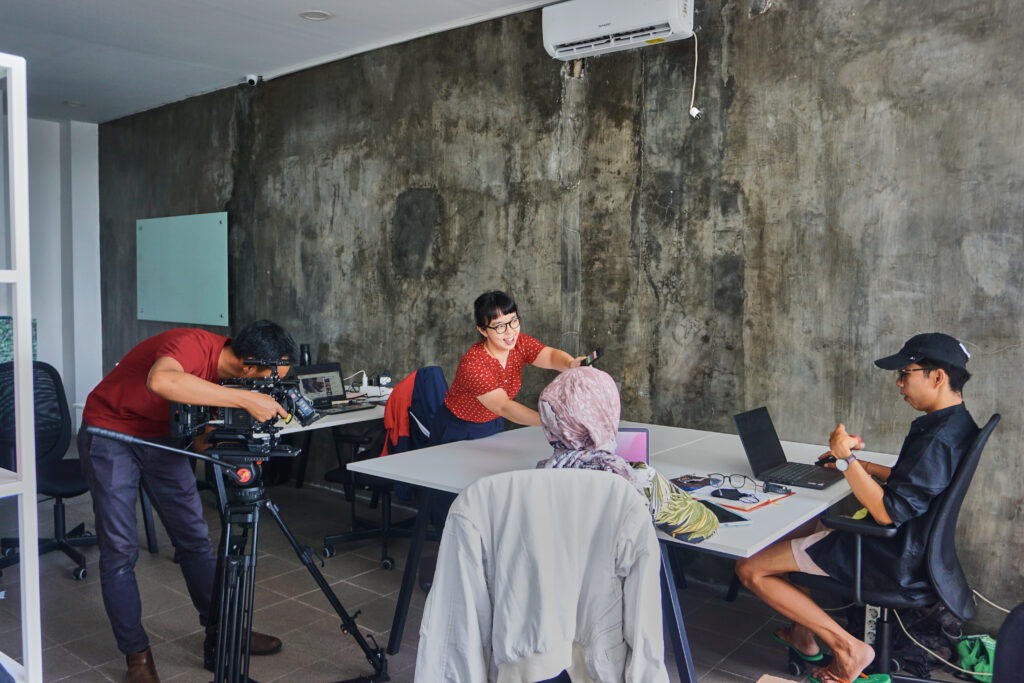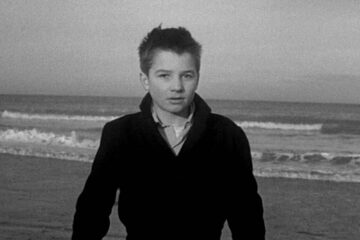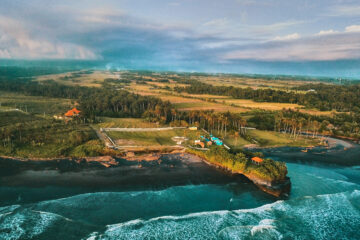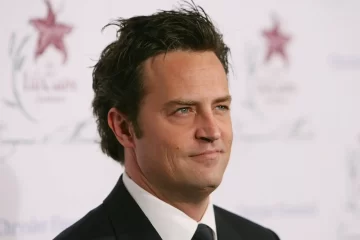
Picture this: you walk into a movie theater, or maybe you’re cozied up on your couch with your favorite film on the TV. The actors are delivering powerful lines, the music is swelling, and the story is unfolding. But what you might not realize is that every single visual element you see has been meticulously planned and designed by a team of creative minds.
Production design encompasses the overall look and feel of a film. It’s the art of creating the world that the characters inhabit, and it goes far beyond just choosing props or paint colors. It’s the secret sauce that sets the tone, mood, and atmosphere of the entire movie. Now, why is this so important? Let’s break it down:
The Evolution of Production Design
Just like film itself, production design has come a long way since its inception. It has evolved in style, technology, and influence over the decades. Let’s take a journey through time and see how production design has shaped and been shaped by the world of cinema.
The Silent Era: In the early days of cinema, production design was relatively minimal. Sets were often simplistic and functional, with the focus on capturing performances rather than elaborate environments. Silent films relied on visual storytelling, and design played a role in conveying the essentials.
Golden Age of Hollywood: The 1930s and ’40s were the golden age of Hollywood, and with it came the birth of the studio system. This period saw a surge in elaborate and glamorous production design, with iconic studios like MGM and Warner Bros. creating opulent sets for their films.
The Technicolor Revolution: The introduction of Technicolor in the 1930s changed the game for production designers. Color palettes became a central focus, and films like “The Wizard of Oz” and “Gone with the Wind” showcased the power of color in storytelling.
The New Hollywood Era: The 1960s and ’70s brought about a new wave of filmmaking. Directors like Martin Scorsese and Francis Ford Coppola pushed the boundaries of storytelling. Production design in this era often had a gritty, realistic feel that reflected the turbulent times.
The Digital Age: The 21st century has witnessed a digital revolution in production design. CGI and advanced technology have allowed for the creation of entire worlds, from the enchanting landscapes of “Avatar” to the complex dreamscapes of “Inception.”
Influence on Pop Culture: The impact of production design extends beyond the screen. Iconic sets and props have become cultural touchstones, inspiring fashion, interior design, and even theme park attractions. The Millennium Falcon and Hogwarts are as real to fans as any physical place.
Cultural and Societal Shifts: Production design often mirrors cultural and societal shifts. The sleek, minimalistic designs of the mid-20th century reflected the modernist movement, while the post-apocalyptic landscapes of recent films tap into contemporary anxieties.
A Global Art Form: With the globalization of cinema, production design is no longer limited to Hollywood. It has become a global art form, with designers from around the world contributing their unique perspectives to film.
The Importance of Production Design
- Setting the Scene: Imagine a historical drama without the right costumes, architecture, and decor. You’d have knights in tracksuits, castles made of cardboard, and anachronistic furniture. It’d be a hot mess, right? Production designers transport you to different eras and worlds with their attention to detail.
- Character Insights: A character’s environment speaks volumes about who they are. A cluttered, dimly lit apartment says something different about a person than a sleek, modern penthouse. Production design helps us understand and connect with the characters on a deeper level.
- Atmosphere and Emotion: Ever noticed how a creepy mansion can give you the heebie-jeebies or how a colorful, whimsical house can make you feel joyful? That’s all thanks to the production designer’s ability to evoke emotions and create atmosphere through visuals.
- Branding and Iconography: Production design often becomes synonymous with the movie itself. Think about the iconic DeLorean from “Back to the Future” or the stunning, gravity-defying world of “Inception.” These elements become cultural touchstones and are often remembered long after the credits roll.
The Impact of Production Design on Storytelling
Have you ever watched a film and felt like you were transported to another world? That’s the magic of production design at play. It’s not just about creating a visually stunning backdrop; it’s about enhancing the story itself.
Think about “The Grand Budapest Hotel” – its vibrant, whimsical design is as much a character as the actors themselves. Or consider “Blade Runner” with its futuristic, dystopian vision that becomes a character in its own right. These worlds immerse you in the story, and they linger in your mind long after the credits roll.
Production design elevates the narrative, making it more immersive and emotionally resonant. It amplifies tension, highlights themes, and enriches character arcs. A dark, brooding lair can make a villain more menacing, and a cozy, warm living room can emphasize the intimacy of a family’s bond.
The Unsung Heroes
Production designers are more than just decorators; they are the visionaries who make the impossible seem real on screen. They dive into extensive research to ensure every historical period, every futuristic world, and every whimsical fantasy realm is portrayed with authenticity. They have a keen sense of storytelling, transforming words from the script into tangible visuals that breathe life into the narrative.
Masterminds Behind the Magic
- Research: Production designers are akin to detectives, unearthing hidden gems of information that will bring the story to life. Whether it’s exploring ancient manuscripts for a medieval epic or studying cutting-edge technology for a sci-fi thriller, their research is meticulous.
- Collaboration: These maestros of design collaborate closely with other departments to ensure harmony on the set. They discuss color palettes with costume designers, lighting with cinematographers, and overall aesthetics with the director. It’s a symphony of creativity.
- Problem Solvers: Production designers are the ultimate problem solvers. They must figure out how to transform a regular parking lot into a post-apocalyptic wasteland or how to build a spaceship interior that’s both functional and believable. It’s a unique combination of artistry and engineering.
- Budget Wizards: They are the keepers of the budget, and they have to be resourceful. Their ability to create grandeur within constraints is nothing short of awe-inspiring. It’s not about throwing money at the screen; it’s about making every penny count.
The Versatility of Production Design
Production design isn’t confined to a single genre or style; it’s as diverse as the films it enhances. Here, we’ll take a closer look at how production design adapts to different cinematic universes:
1. Historical Epics: When a film takes you back in time, it’s the production designer who meticulously recreates the era. From the opulence of the Renaissance to the grit of the Wild West, they craft a world that feels both authentic and immersive. Every piece of furniture, every costume, and every building has to evoke the spirit of the period.
2. Sci-Fi and Fantasy: In futuristic and fantastical realms, the production designer’s canvas knows no bounds. They conjure up alien landscapes, futuristic cities, and mystical realms where the laws of physics need not apply. Think of the intricate alien cities in “Avatar” or the whimsical world of “Alice in Wonderland.”
3. Contemporary Realism: Even in modern settings, production designers subtly manipulate the environment to enhance storytelling. The sleek, minimalist homes of a tech mogul in a thriller or the cluttered, neon-soaked streets of a gritty crime drama all play a vital role in shaping the narrative.
4. Animated Films: Don’t think production design is limited to live-action. In animated movies, every element, from character design to the world they inhabit, is meticulously crafted. Pixar’s “Inside Out” is a prime example of how production design in animation can be equally vital in conveying complex emotions and concepts.
5. Genre Play: In genre-bending films, the production designer’s versatility shines through. When a movie shifts from a gritty crime drama to a dreamy musical, the design must seamlessly evolve with it, enhancing the audience’s experience.
6. Psychological Thrillers: The set itself can be a character in psychological thrillers. A claustrophobic, maze-like house in “The Shining” or the disorienting dreamscapes in “Inception” are perfect examples of how production design can mirror the characters’ mental states.
The Award-Winning Artistry of Production Design
You might not realize it, but production design is often the unsung star of award-winning films. The Oscars have a category dedicated to it – “Best Production Design.” It’s a testament to the pivotal role these artists play in bringing a director’s vision to life. Let’s delve into why this recognition is well-deserved.
Oscar-Worthy Achievements
- Immersive Worlds: Many Best Production Design winners are known for creating immersive, unforgettable worlds. Take “Avatar,” which won the award in 2010. Its lush, otherworldly landscapes were an integral part of the film’s success, and they transported the audience to the alien planet of Pandora.
- Period Accuracy: Films that transport you to a different time often get noticed by the Academy. “The Grand Budapest Hotel,” a whimsical confection of artistry and storytelling, won the award in 2015 for its meticulous recreation of a bygone era.
- Visual Spectacles: The Academy loves films that are visual spectacles, and production designers play a key role in achieving this. “Mad Max: Fury Road,” with its post-apocalyptic wasteland, was a deserving winner in 2016.
- Cinematic Masterpieces: Films that are celebrated for their overall cinematic excellence often win the Best Production Design category. “Parasite,” the 2020 winner, showcases how a meticulously designed home can symbolize class divisions and social commentary.
The Realization of Vision
Every director has a vision for their film, but it’s the production designer who transforms that vision into a tangible reality. They work in harmony with the director’s imagination, making the intangible visible. The creation of iconic sets, such as the Overlook Hotel in “The Shining” or the magical world of “Harry Potter,” is a testament to the power of production design in realizing these visions.
Innovative Storytelling
Some of the most innovative storytelling in cinema is achieved through production design. Consider “The Matrix” with its iconic green-tinted code-filled world, or “Pan’s Labyrinth,” where a child’s imagination blends seamlessly with dark fantasy. These films take risks, and their success is often linked to the bold choices of production designers.
The Marriage of Art and Commerce
Production design is a creative endeavor, but it’s also a business. It involves tight budgets, tight schedules, and the delicate dance of artistic expression meeting commercial requirements. It’s about making creative choices that resonate with audiences while staying within the constraints of time and money.
In today’s film industry, production designers are not only artists but also problem solvers, negotiators, and leaders. They balance creativity with logistics, ensuring that the director’s vision is realized without breaking the bank.
The Future of Production Design
As technology evolves, so does production design. The digital age has opened up new possibilities, allowing designers to create even more stunning and immersive worlds. Virtual production techniques, like those used in “The Mandalorian,” are changing the game by enabling real-time visualization of complex sets.
However, the future also holds challenges. Environmental concerns are pushing the industry towards sustainability, with designers seeking eco-friendly materials and methods. These artists are not just shaping imaginary worlds; they are also responsible for reducing the environmental footprint of filmmaking.
In the world of cinema, production design is the silent symphony that plays behind the scenes, the artist’s palette that shapes the visual narrative, and the hidden gem that often goes unnoticed. It’s a fusion of creativity, research, and technical expertise that elevates the art of filmmaking.
As we’ve delved into the enchanting realm of production design, you now understand the pivotal role it plays in crafting the look and feel of a film. It’s not just about creating beautiful sets; it’s about conveying emotion, enhancing storytelling, and immersing the audience in different worlds and eras.
So, what’s the call to action? The next time you settle in to watch a film, I invite you to put on your production design glasses. Pay attention to the subtle details, the choice of color, the texture of the props, and the arrangement of objects. Notice how the sets speak to you, how they influence your emotions, and how they transport you to another place and time.
In doing so, you’ll embark on a whole new cinematic journey, one where you appreciate the unsung heroes behind the scenes who make the magic of the movies possible. It’s a journey that will deepen your connection to the art of filmmaking and make every movie-watching experience a richer and more immersive one.
Production design is the art that breathes life into the director’s vision, and now you hold the key to unlocking its secrets. The next time you watch a film, be it a historical epic, a sci-fi adventure, or an intimate drama, remember that the sets, the props, and the colors are speaking to you. Listen closely, and you’ll hear the unspoken language of cinema, an art form that has the power to transport you, engage your emotions, and make every film a truly unforgettable experience.




1 Comment
Storytelling for Movie: A Simple Guide from Idea to Big Screen - Viking Sunset Studios · November 21, 2023 at 10:50 am
[…] Read more about filmmaking tips […]